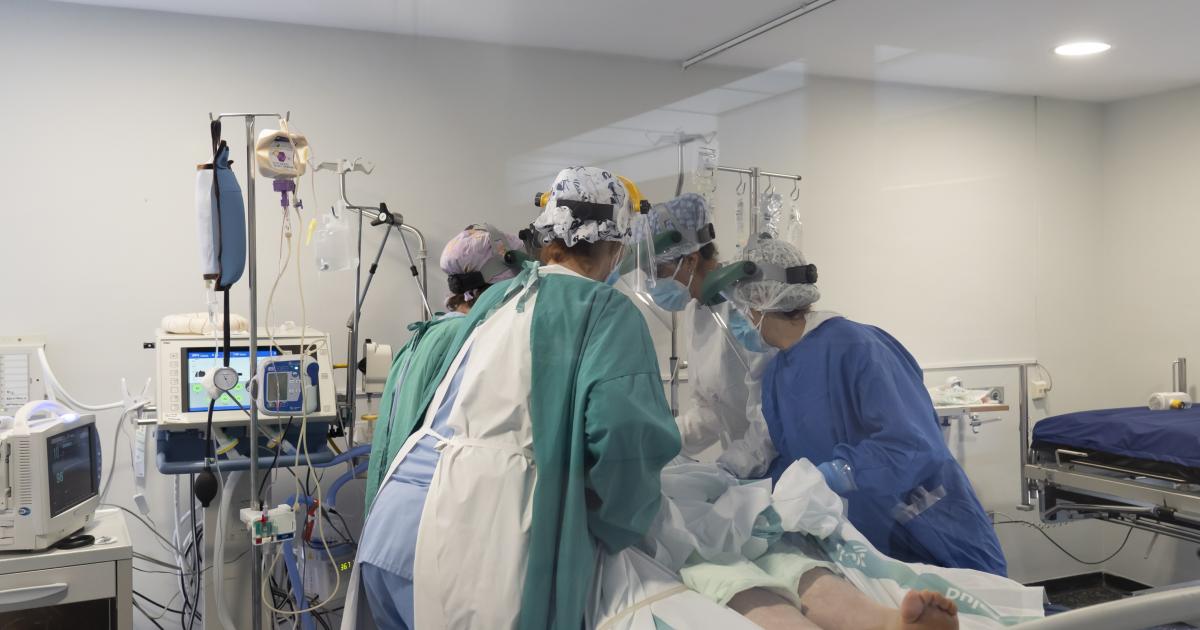Mortality rates in Aragon have dropped by more than 10% and are now at pre-pandemic levels.

Death rates after three years of shooting are returning to normal figures in the Aragonese community.. This, according to experts, is a “compensatory” phenomenon, a product of the impact of Covid. According to preliminary data published yesterday by the National Institute of Statistics (INE), In 2023, 13,736 people died in Aragon, which is 10.19% less than in 2022., when 15,294 deaths were reached. However, it was in 2020, when the pandemic began and the number of cases of infection increased sharply, even without a vaccine, that it spread the most, reaching 16,592 people.
“This is what is known in epidemiology as the harvest effect.”, details Nacho de Blas, an epidemiologist at the University of Zaragoza, who recalls that many people with multimorbidity who otherwise might have lived for some time have died as a result of Covid. “So it’s now back to pre-pandemic levels,” he notes.
Federico Arribas, secretary of the Spanish Society of Epidemiology and professor of public health at the Huesca campus, also sees it this way: “It was an infectious disease to which the population was not exposed and which “This caused increased mortality mainly among populations in poorer health, who were likely to die in subsequent years.”. Now, he elaborates, while the virus continues to spread and is in fact transmitted “more easily,” its lethality has decreased both because of its adaptation to humans and because of the impact—through infection or vaccine—on the population.
This effect was seen in three provinces, although with nuances.. In Zaragoza, the death rate has fallen the least, still above the pre-pandemic average; while Huesca in 2023 recorded the lowest levels in at least the last decade. “We will face a transition period in the coming years until the situation returns to normal,” says de Blas.
Evolution of mortality in Aragon
In this sense, Arribas recalls that during the first week of this year, according to data collected in the Epidemiological Bulletin of Aragon, there has been an increase in mortality, especially in Zaragoza and among people over 65 years of age, as a result of the epidemiological situation. “Covid is not widespread at the moment and there is an outbreak of influenza A.“As in the years preceding the pandemic, when there was a certain overload of medical care and an increase in mortality,” he notes.
INE data shows a similar trend in all autonomies.although Aragon is one of those that registered the largest decline and the figures are closer to 2019. Others, such as the Canary Islands, the Valencian Community or Andalusia, still have figures 6% higher than before the pandemic.
Birth rate is declining
And although mortality is returning to its usual records, The birth rate continues to decline. Until November 2023, there were 7,897 births in Aragon. 4.61% less than the same period last year. The downward trend that began many years ago continues and has only recently been reversed in 2021. By province, Zaragoza is the country with the smallest accumulated decline in 2023, with only 0.87%, close to 6,000 until November. In Teruel the drop is 12.45%, with a total of 766 newborns; while in Huesca it reaches 15.78%, with 1,177 births.
For the country as a whole, the cumulative decline is 2.16%., with La Rioja having the lowest rate (10.66%). For their part, Madrid and Extremadura even achieved positive results.